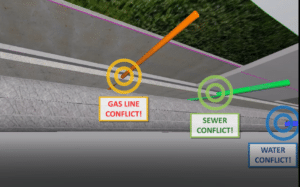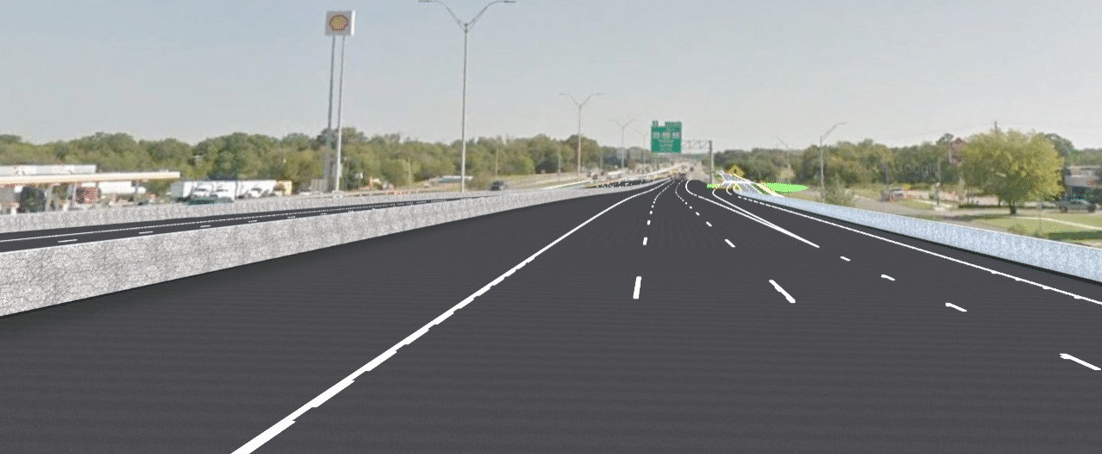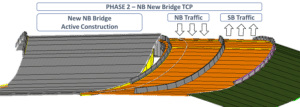Volkert has spent the past year using Bentley’s OpenRoads Technology to deliver 3D models of all Texas transportation design projects. 3D design technology is nothing new, but the workflow and tools have finally evolved to the point that it makes sense to use them in our day-to-day engineering practices.
We have found that common project challenges including utility conflicts, traffic control, design changes, and constructability can be confidently resolved and communicated among project team members by leveraging 3D design.
 One of the most promising elements is the ability to use OpenRoads 3D design to display and analyze utility conflicts in a visual and data-rich environment. This enables all of the design team to see how their respective disciplines are affecting existing and proposed utilities, and look for opportunities to avoid conflicts. It also allows for meaningful communication with utility owners who can clearly see where and why certain utilities need to be relocated. On an urban reconstruction project in DeLeon, Texas, we were able to model 43 utility conflict locations and develop a detailed conflict presentation and set of plans to stakeholders.
One of the most promising elements is the ability to use OpenRoads 3D design to display and analyze utility conflicts in a visual and data-rich environment. This enables all of the design team to see how their respective disciplines are affecting existing and proposed utilities, and look for opportunities to avoid conflicts. It also allows for meaningful communication with utility owners who can clearly see where and why certain utilities need to be relocated. On an urban reconstruction project in DeLeon, Texas, we were able to model 43 utility conflict locations and develop a detailed conflict presentation and set of plans to stakeholders.
In the same district, we tackled another project that featured over 50 driveways in less than one mile with pedestrian elements at each crossing. To complete the task of designing them efficiently, we developed a template that matched the districts driveway standard and applied it to each driveway. We created key parametric constraints for each driveway placed so they would automatically update with any horizontal or vertical changes. Finally, when the district decided to update their driveway standard with a small mountable curb standard, updating the design was as simple as updating the template library and pushing the change out to all 50+ driveways.
For one of our larger projects, IH-35 at SH 123 in San Marcos, our team stretched our vision for constructibility by creating a detailed 3D model for each phase and stage of construction. We then used the model to present a 4D model (3D+schedule) of the anticipated sequence of construction. By doing this we were able to resolve key constructibility issues prior to the 30 percent submittal, including grade differentials, utility conflicts, and temporary drainage issues.
Above all, we have learned to leverage OpenRoads-based 3D designs on an ongoing basis to effectively communicate design and construction intent. We continue to work with our partners, clients, and contractors to develop innovative solutions using this technology that provide value throughout the project development life cycle.



